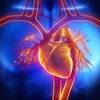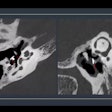Dear CT Insider,
After a big randomized trial, data analysis, and years of debate, CT lung cancer screening policy in the U.S. is settled for now, offering reimbursement for screening when strict guidelines are followed.
Under guidelines approved by the U.S. Centers for Medicare and Medicaid Services, individuals who want to be reimbursed for screening for lung cancer must, for example, have a smoking history of at least 30 pack-years, be 55 to 77 years of age, and be a current smoker or have quit within the past 15 years.
But what if most patients who actually present with lung cancer wouldn't meet the current screening guidelines? Would it mean the criteria were inadequate, or that demographic assessments alone simply can't capture most patients at risk? A thoracic oncologist friend of ours says his own lung cancer patients rarely would have qualified for CT screening under the current guidelines.
His impressions are backed up by a new study that looked at more than 1,000 incident lung cancer cases and found patients increasingly not qualified for CT screening -- most of them, in fact. Could the guidelines be improved? Could a new assay or DNA test help matters? Get the rest of the story in this issue's Insider Exclusive.
At the same time, there is new evidence that participants in a big European CT lung cancer screening trial fit the broader population, meaning results from the study can be generalized more broadly.
Individuals scanned with CT in the Nederlands-Leuvens Longkanker Screenings Onderzoek (NELSON) lung cancer screening trial had a similar risk of cancer as people who did not participate in the study. The results bring some assurance that disease and mortality rates in screening practice will be similar to those predicted by the trial. Check out the story here.
Once lung nodules are found, the question becomes what to do with them. New algorithms such as Lung-RADS, the subject of another article, aim to zero in on which nodules have the greatest potential to be cancer. Use of Lung-RADS definitely reduces time-wasting false-positive detections, researchers say, but it comes at a price. Learn more by clicking here.
There is also new evidence that CT and MRI use across the U.S. is anything but homogeneous, at least in lumbar imaging and brain CT. Researchers aimed to identify regional variation in imaging use by provider in hopes of identifying potential targets for performance improvement initiatives. See what they found here.
Stroke alarm to treatment times keep getting faster when initial CT scans are performed right in the ambulance. Borrowing a page from German researchers, a group from Cleveland improved their care statistics significantly with the use of a mobile stroke CT unit. Next up for the researchers are patient outcomes and cost-effectiveness, in a story you'll find here.
Finally, approval of the first clinical 3D breast scanner could bring change to mammography, with a more patient-friendly exam that is faster to acquire and interpret, while also providing broader diagnostic possibilities than conventional mammography. Yet there are hurdles to surmount as the new technique looks for the best route to commercialization. Find out more here.
Stay up to date on all the new developments in CT imaging right here in your CT Community.



















